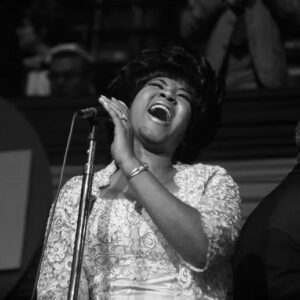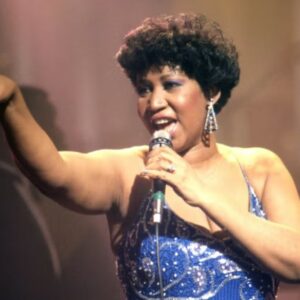Introduction
In the kaleidoscopic world of pop music, few figures shine as brightly as Michael Jackson. His performances at the MTV Video Music Awards (VMAs) are not just milestones in his career; they are defining moments in the evolution of music and popular culture. These performances transcended the traditional boundaries of entertainment, showcasing an innovative blend of choreography, theatricality, and social commentary that resonated with audiences around the globe. From the moonwalk to the groundbreaking “Thriller” dance sequence, Jackson’s presence at the VMAs reshaped the landscape of live performance and solidified his status as the King of Pop.
Revolutionary Showmanship
Michael Jackson’s impact on live performance is immeasurable. He redefined what it meant to be a performer. Jackson’s innovative stage techniques set a new standard in the industry. His choreography was meticulously crafted, combining elements of street dance with classical ballet, creating a unique visual language that captivated audiences. The precision and fluidity of his movements were mesmerizing, often complemented by cutting-edge special effects that added another layer of excitement to his performances.
One of the most remarkable aspects of Jackson’s performances was his ability to fuse music with visual storytelling. The iconic “Thriller” performance is a prime example; the dance narrative, involving zombies and ghouls, not only entertained but also left a lasting imprint on pop culture. The choreography, designed by Michael Peters, was groundbreaking, introducing audiences to a new level of complexity in dance that was rarely seen in popular music.
Jackson’s influence on future artists is profound. Performers like Britney Spears, Beyoncé, and Justin Timberlake have cited him as a major inspiration, often adopting his high-energy dance routines and attention to detail in their own shows. The emphasis on choreography in modern pop performances can be traced directly back to Jackson’s pioneering work, where every move was calculated to enhance the song’s emotional impact.
Moreover, Jackson’s showmanship extended beyond dance; his use of elaborate sets, costumes, and lighting created immersive experiences that transformed live concerts into spectacles. The 1988 performance of “The Way You Make Me Feel,” where he invited a fan on stage, demonstrated not only his charisma but also his connection with audiences, fostering a sense of intimacy amidst the grand spectacle.
Cultural Significance
Michael Jackson’s performances at the VMAs were not merely entertainment; they were cultural events that addressed pressing social issues of the time. Jackson’s artistry often intersected with themes of race, identity, and social justice, reflecting the complexities of the American experience in the late 20th century. At a time when racial tensions were high, particularly in the music industry, Jackson became a symbol of possibility and change.
His success during the MTV era broke significant racial barriers. The network, which initially focused predominantly on white artists, faced criticism for its lack of diversity. Jackson’s presence on MTV challenged these norms. With his groundbreaking music videos and electrifying performances, he paved the way for a more inclusive representation of artists of color. His 1988 performance of “Black or White” was particularly poignant, symbolizing a unifying message against racism. The song’s themes of acceptance and equality resonated with audiences worldwide, further establishing Jackson as a cultural ambassador.
Additionally, his music often touched upon societal issues. Songs like “Man in the Mirror” and “Heal the World” were not only chart-toppers but also calls to action. Jackson’s performances frequently incorporated these themes, reminding audiences of their shared responsibility to foster change. By using his platform to address these critical issues, he transcended the role of a mere entertainer and emerged as a voice for the voiceless.
The Iconic “Thriller” Performance
No discussion of Michael Jackson’s VMA legacy would be complete without mentioning the historic 1983 “Thriller” performance. This landmark event not only showcased Jackson’s exceptional talent but also set a new standard for music videos and live performances. The performance, featuring the now-legendary dance sequence, was a theatrical spectacle that blended horror with pop, creating a cultural phenomenon that continues to influence artists today.
The choreography, developed in collaboration with director John Landis and choreographer Michael Peters, is a hallmark of Jackson’s creative genius. The intricate dance moves, which included the now-iconic moonwalk, became instant cultural touchstones. The performance’s theatricality, complete with makeup and costumes that transformed the stage into a horror movie set, highlighted Jackson’s ability to fuse music and storytelling seamlessly.
“Thriller” also transformed the music video into a legitimate art form. Prior to Jackson, music videos were primarily promotional tools. However, Jackson’s video, featuring a storyline, characters, and cinematic production values, elevated the medium to new heights. It demonstrated that music videos could be a form of creative expression in their own right. The 13-minute video, often regarded as the greatest music video of all time, inspired a generation of artists to invest in their visual presentations, paving the way for elaborate music video productions that became a staple of the industry.
The cultural impact of “Thriller” extends far beyond its initial release. The dance moves from the performance have become ingrained in popular culture, frequently referenced and parodied in films, television shows, and commercials. The iconic choreography continues to inspire dancers and performers, illustrating the timeless nature of Jackson’s artistry.
Influence on the MTV Brand
Michael Jackson’s relationship with MTV was symbiotic, profoundly shaping both the artist and the platform. When Jackson first appeared on MTV, the network was still establishing its identity in the music landscape. His presence not only helped elevate MTV’s status as a major platform for music videos but also transformed it into a cultural phenomenon.
Prior to Jackson’s influence, MTV had been criticized for its lack of diversity and the marginalization of Black artists. Jackson’s success on the network opened doors for a broader range of artists and music genres, challenging the status quo and expanding MTV’s programming to include a more diverse array of voices. His groundbreaking music videos, particularly for “Billie Jean,” “Beat It,” and “Thriller,” were instrumental in changing the way music was consumed and marketed.
MTV and Jackson together revolutionized the music video format. Jackson’s performances introduced elements of narrative storytelling, special effects, and intricate choreography, influencing the aesthetic of music videos for years to come. The partnership was mutually beneficial; as Jackson’s star rose, so too did MTV’s visibility and cultural relevance. The VMAs became a stage where Jackson could showcase his artistic vision while simultaneously enhancing MTV’s reputation as a leading force in the music industry.
Moreover, Jackson’s appearances at the VMAs often generated massive media buzz, attracting viewers who may not have typically tuned in. His performances were events in themselves, creating a spectacle that drew in audiences and solidified MTV as the go-to platform for music entertainment. The connection between Jackson and MTV remains one of the most significant collaborations in the history of music.
Legacy and Inspiration
Michael Jackson’s legacy is indelible, with his VMA performances serving as a wellspring of inspiration for contemporary artists. The impact of his artistry continues to resonate in the music industry, influencing a new generation of performers who aspire to achieve the same level of creativity and showmanship.
Artists like Beyoncé, Lady Gaga, and Bruno Mars have all drawn upon Jackson’s legacy, infusing their performances with elaborate choreography, visual storytelling, and theatricality. The meticulous attention to detail in their shows is a testament to Jackson’s influence. Each performance echoes his ethos of striving for excellence and pushing artistic boundaries.
In addition, Jackson’s messages of unity and social justice remain relevant today. His ability to use music as a vehicle for change continues to inspire artists to speak out on important issues, reflecting the ongoing struggles for equality and justice. In an era marked by social upheaval, Jackson’s work serves as a reminder of the power of art to effect change and bring people together.
The continued popularity of Jackson’s music and performances, as evidenced by tribute shows, documentaries, and social media, highlights the enduring nature of his impact. The moonwalk, the dance from “Thriller,” and the electrifying energy of his live shows have all become cultural lexicons, cementing his status as a timeless icon.
Conclusion
Michael Jackson’s performances at the MTV Video Music Awards are etched in the annals of music history as transformative moments that reshaped pop culture. His revolutionary showmanship, cultural significance, and influence on the MTV brand have left an indelible mark that continues to inspire artists and entertain audiences worldwide.
As we reflect on Jackson’s legacy, it is essential to revisit these performances with a fresh perspective, appreciating the historical context in which they were created. His artistry transcends time, reminding us of the power of music and performance to inspire, challenge, and unite. In the words of Jackson himself, “If you want to make the world a better place, take a look at yourself and make a change.” As we celebrate his contributions, let us also honor the message





